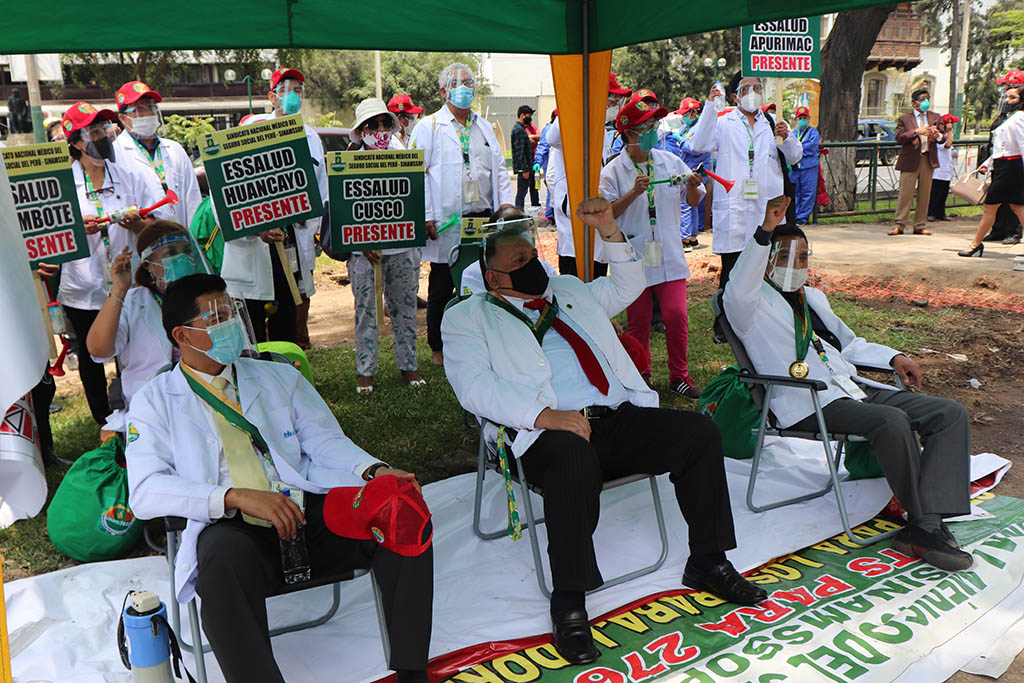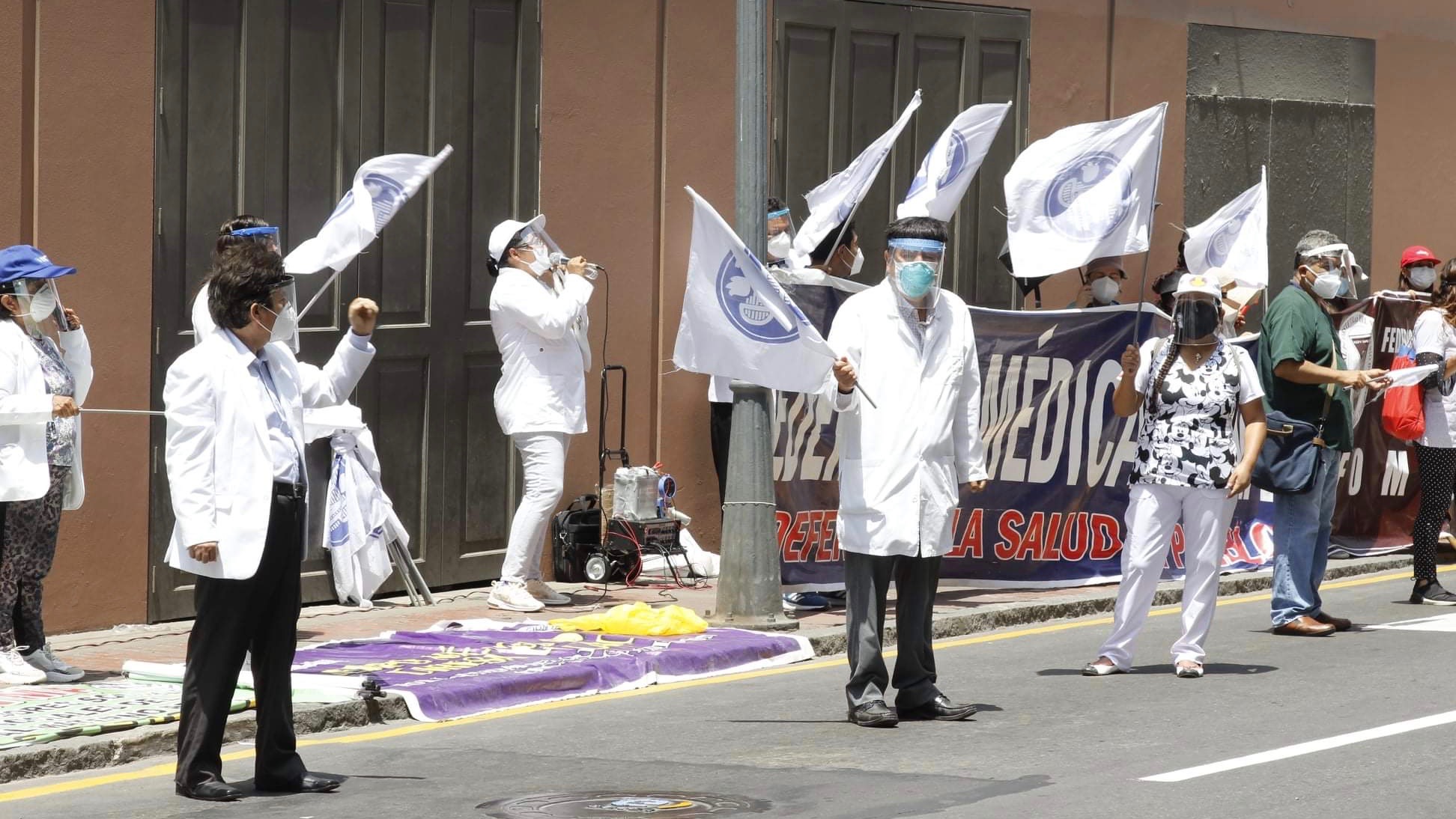Since January 13, thousands of doctors, nurses and other healthcare professionals from a dozen health workers’ unions have been carrying out an indefinite national strike. They are demanding a greater budget for the public health sector in 2021 and better working conditions for all health workers who are fighting the COVID-19 pandemic at the frontlines. The strike was called for by the Peruvian Medical Federation (FMP).
On January 27, the 15th day of the national strike, in the capital city Lima, representatives of different trade unions held a sit-in in front of the headquarters of the Ministry of Economy and Finance. They demanded to meet economic minister Waldo Mendoza to request him to give an answer to the bill presented on January 18 by the Ministry of Health regarding the increase in salaries of public healthcare personnel, one of their many demands.
🔴🔵 #FMP #HuelgaNacional #trabajadoresdelasalud #Día15
27 de enero, desde el frontis del MEF, se llevó la medida de lucha por parte de los trabajadores del sector salud exigiendo que el ministro Waldo Mendoza se reúna con los representantes de los gremios. pic.twitter.com/k24RMTnBfN— Federación Médica Peruana Oficial (@FMedicaPeruana) January 27, 2021
In addition to the compliance with the third and fourth phases of the new salary scale, which should have been done a year ago in January 2020, the health workers’ unions are demanding that the government increase the health budget from 2.4% to 6% of the GDP. They are also demanding that the government respect Law 31039 on appointment, automatic promotion, change of occupation and career line for health workers; adhere to timely salary payment to third category and CAS (contractual) health workers; complete the payment of the complementary hours and COVID-19 bonus to all health workers, which has not been delivered since October 2020; good quality PPE kits, N95 masks and rapid testing for all workers every 15 days; and no dismissal of any contractual or third category health workers.
Godofredo Talavera, president of the FMP, pointed out that the pandemic has overwhelmed the country’s public health system. He reiterated that there is a shortage of ICU beds, ventilators, oxygen tanks, molecular diagnostic kits, PPE kits and other medical supplies as well as hospitals and health professionals. Talavera stressed that increasing the health budget is important in order to resolve the crisis and meet the growing requirement of the nation’s population.
Additionally, last week, the secretary general of the National Social Security Medical Union of Peru (SINAMSSOP), Teodoro Quiñones, and five other leaders from different medical organizations went on a hunger strike from January 19 to 21, in front of the Ministry of Labor and Promotion of Employment. They demanded the immediate resignation of the executive president of EsSalud (state social health insurance body), Fiorella Molinelli, due to “the abandonment of the assistance centers, his inability to administrate and the lack of transparency in the management of resources.”
The SINAMSSOP medical professionals also demanded more investment in the health sector, denouncing lack of sufficient medical equipment, supplies and personnel. The SINAMSSOP rejected the government’s handling of the pandemic. In addition to the implementation of new salary scale and continuation of the work contracts of contractual and third category health workers, the SINAMSSOP demanded compliance with a list of claims that date back to 2015 such as re-establishment of collective bargaining and t the right to freedom of association, among various other demands.
The labor minister Javier Palacios was supposed to hold a meeting with Teodoro Quiñones and other leaders to discuss their demands on January 26, however, it was suspended and rescheduled for February 2. The meeting was arranged as a result of the hunger strike.

Currently, Peru is witnessing another wave of the coronavirus outbreak. Health systems in various regions of the country are on the verge of collapse. In Lima and Callao, 100% of the ICU beds in private and public hospitals have been occupied. On January 26, President Francisco Sagasti ordered an “absolute quarantine” for 10 regions of the country, including Lima and Callao, with the aim of curbing the spread. The measure will enter into force from January 31 to February 14.
President Sagasti also announced that a first batch of COVID-19 vaccine of half a million doses will arrive in the country in February, and that health personnel will be vaccinated first. As of January 26, Peru has recorded 1,107,239 cases of COVID-19 and 40,107 deaths due to the disease.





